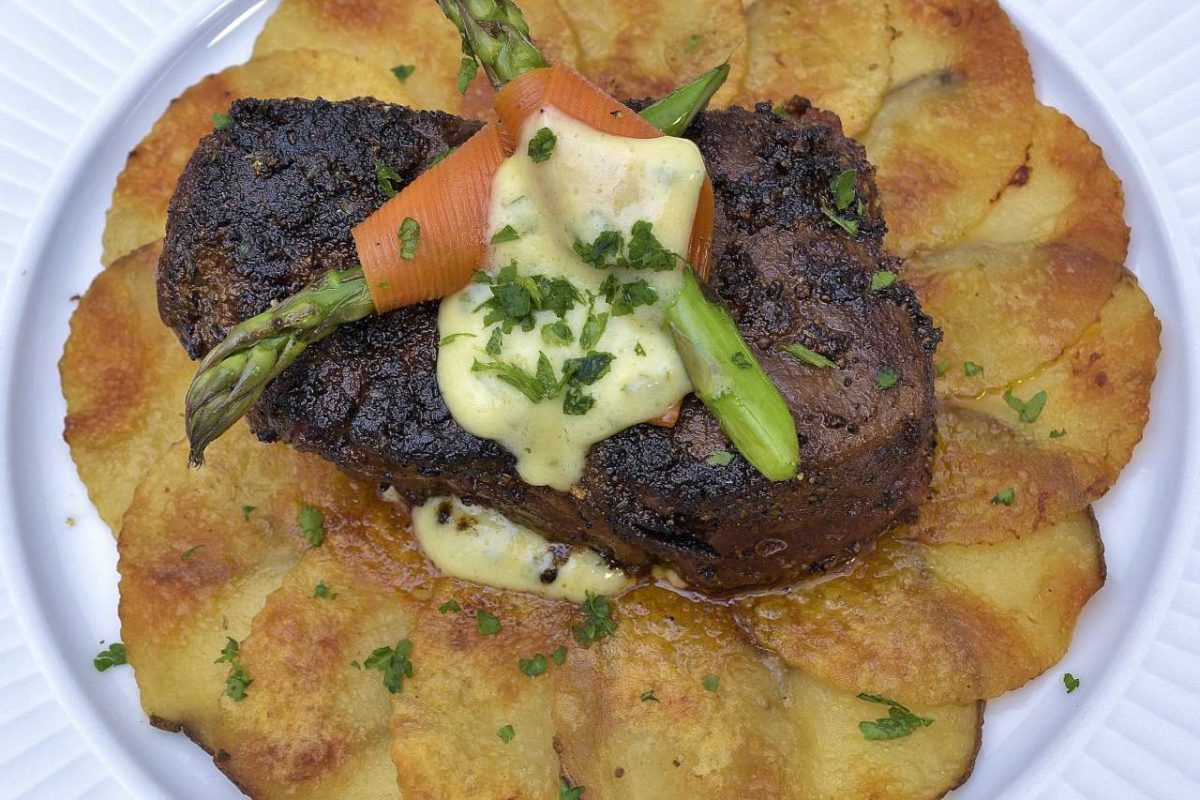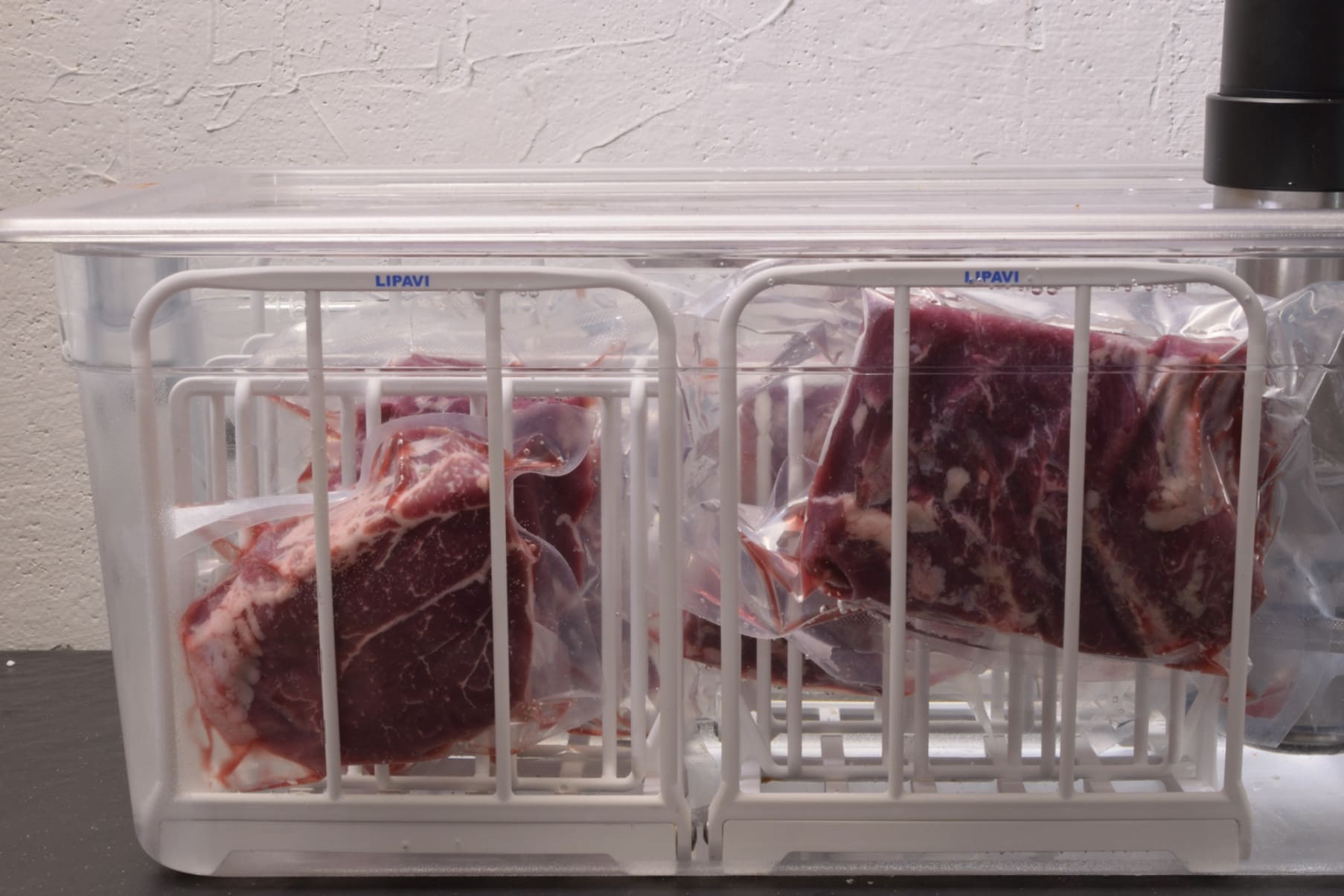How do you like your Filet?
There is debate as to the exact definition of “rare,” “medium rare,” “au point,” etc. A little practice will help you learn just exactly what temperature achieves your preferred appearance of doneness.
Here are some basic temperature setting guidelines:
Rare: 129 F/54 C.
Medium rare: 135 F/57 C
Medium: 140 F/60 C.
Medium well: 150 F/66 C.
Well done: 165 F/74 C.
Serves 4
Level of difficulty, 3.50
Procedure:
Set the sous vide bath to the temperature that most closely matches your preference. Stage each steak into a its own vacuum bag. Seal and sous vide process at that temperature for a minimum of two hours. As per your convenience, the steaks can stay in the bath for at least two more hours without risking any detectable difference in quality or safety. Because of the precise characteristics of sous vide, and if service is delayed for one reason or another, the steaks can stay in the bath up to eight hours or even longer. If you want to process several steaks to different degrees of apparent doneness, visit HERE.
Note: For enthusiasts who like their steaks extremely rare, they can be processed at temperatures as low as 122F /50 C. HOWEVER, in this case the processing time MUST be limited to TWO HOURS in order to meet USDA standards of food safety. The steaks should then be consumed immediately, just as one would if sous vide were not being utilized.
Once your steak(s) are processed, let them rest at room temperature for up to 15 minutes. This allows the surface to cool somewhat, which in turn prevents the searing process from elevating the internal temperature beyond the original target temperature. This time can be spent putting the finishing touches on the other components of your meal. Then, you can season, sear and serve.
While you wait for the steaks to be processed, click HERE for the Bearnaise sauce recipe, and HERE for how to make Galette potatoes.
Vegetables:
Cut the asparagus spears to 2″/5 cm. Saute the asparagus in a hot pan with a few drops of oil and salt and pepper for thirty seconds. Set aside.
Peel the carrot. Bring 2 cups of water to a boil and add the carrot. Cook until tender–approximately five minutes. Shock in iced water and set aside until cool. Use a peeler to cut the carrots into ribbons as shown.
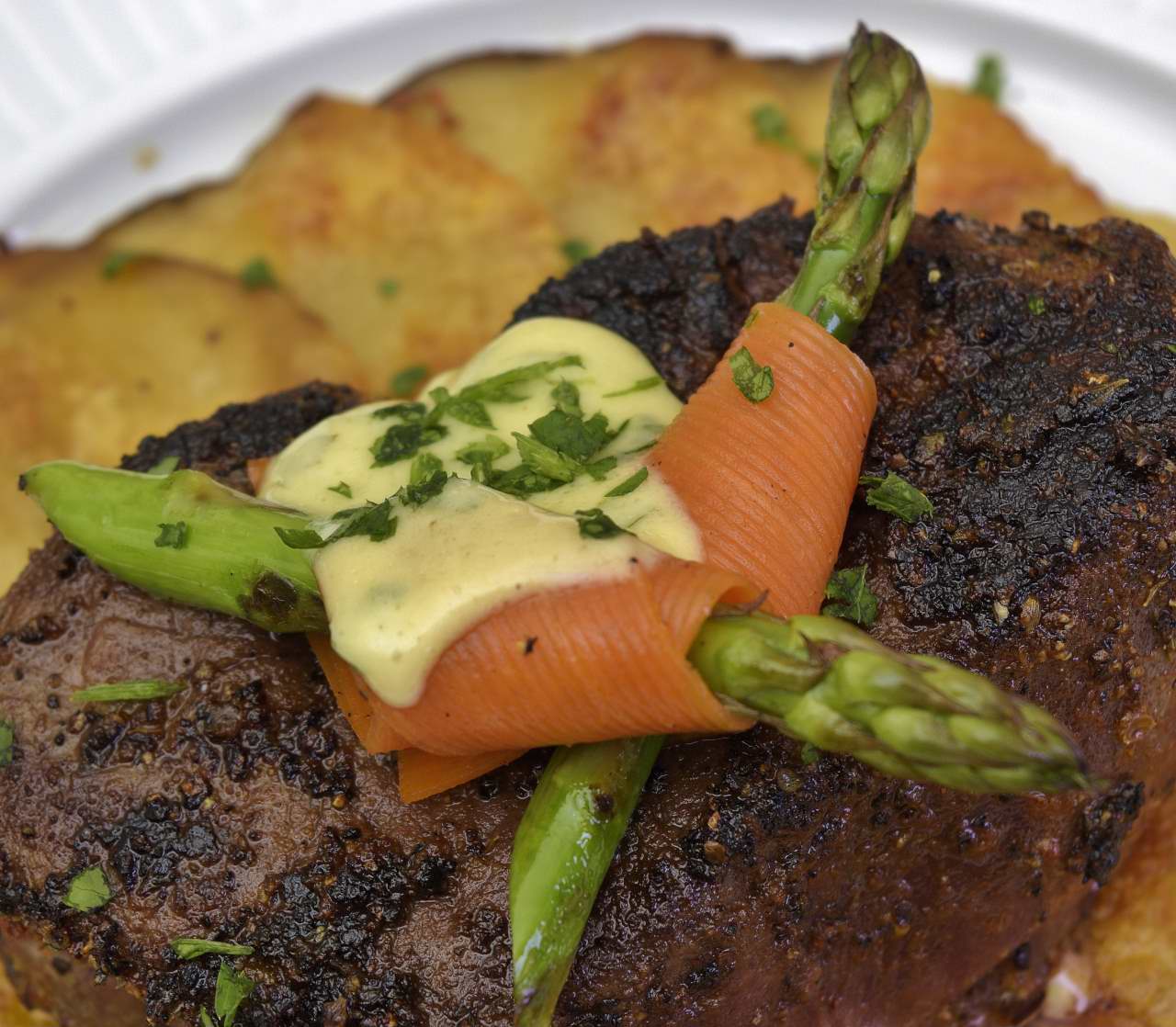
Finishing.:
Turn on your oven’s “warming” function, approximately 140+ F/60+ F. If you do not have a warming function in your oven, set it on the lowest possible setting and leave the oven door slightly open. Most modern dishes will tolerate this much heat–about the same as inside a dishwasher.
Combine the Kosher salt, coarse ground black pepper, smoked paprika, and white pepper–this will be your rub. Remove the filets from the bags and discard the minimal amount of juices. Coat the filets all over with the rub and set aside for five minutes so the seasoning has time to cling.
Place the Galette potatoes onto your dinner plates. Wrap the asparagus in the carrot peels as pictured and rest on the galette potatoes. Put 1 oz/30 ml of Bearnaise sauce in the center of the potatoes, and stage the plates into the warming oven.
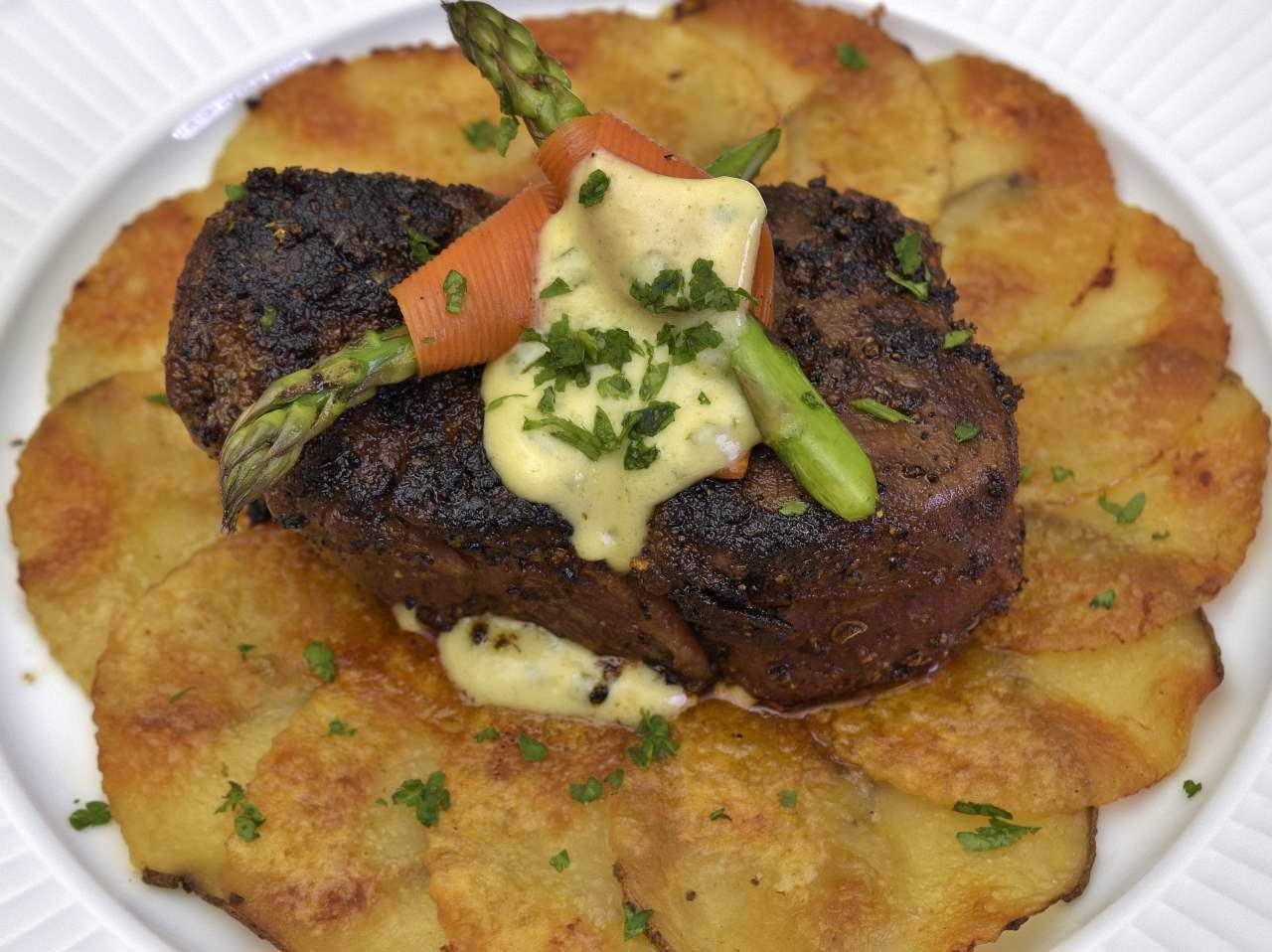
Heat the skillet to 350 F/176 C. Add a few drops of oil to the pan. Stage the steaks into the pan but do not crowd–I recommend that you sear no more than two filets at a time so that the pan keeps its heat. This process requires no more than a minute or two. You want to hear sizzling when the steaks are in the pan. Sear the steaks on all sides, coat with the softened butter and stage on to the plates in the oven while you do more–rub the pan with oil each time you remove steaks.

After all the steaks have been seared, spoon 1 Tablespoon of Bearnaise on top. Arrange the carrot wrapped asparagus spears on top of the filets, add a little bit more sauce, sprinkle with chopped parsley and serve.
The marriage of flavors has no equal for this type of dish. I occasionally incorporate bacon into this type of presentation as well–maybe next time!

129 F/54 C gives you this degree of rare, but you decide for yourself!
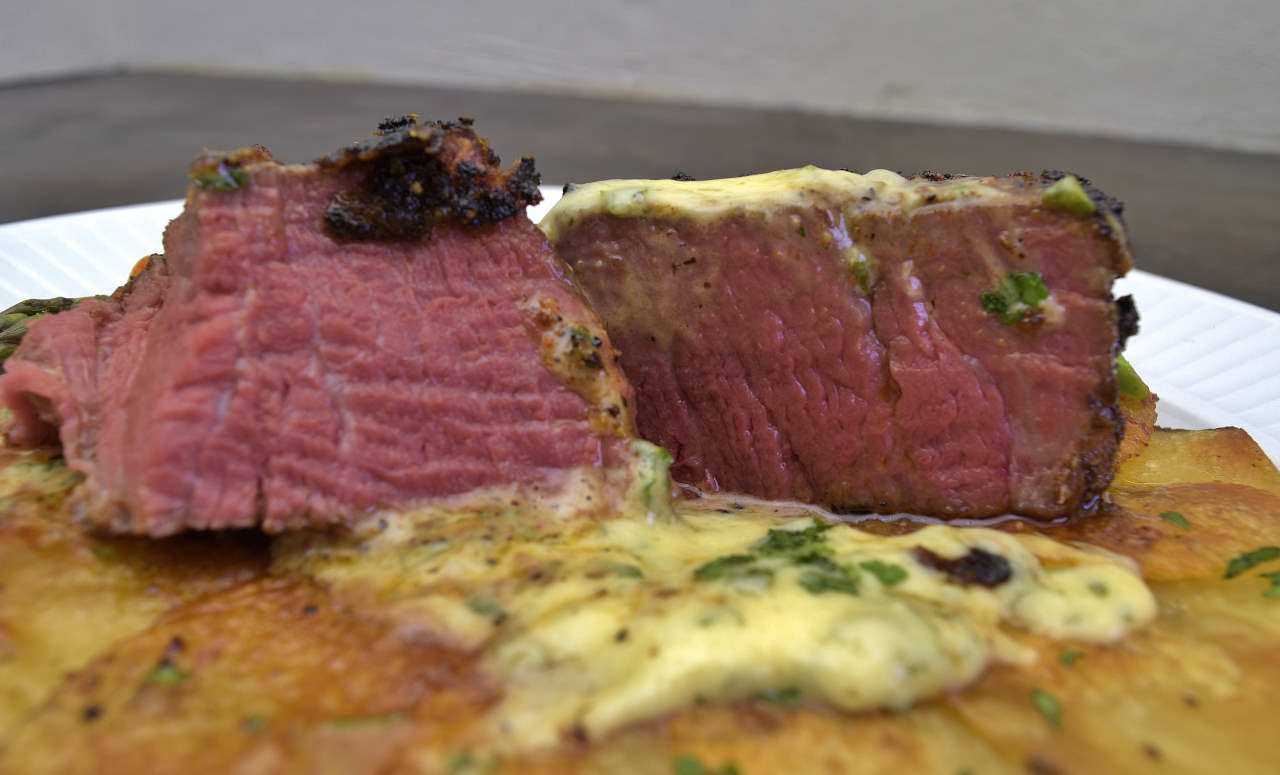
The possibilities for presentation are varied and almost endless. If the galette potatoes are small enough, they can be erected on the plate as seen below. For this presentation, we used halved cherry tomatoes, sauteed scallion whites, and mushrooms along with the asparagus and turned carrots. Have fun with it!

Don’t forget the Lipavi steak knife!
Happy Searing!
Norm King
